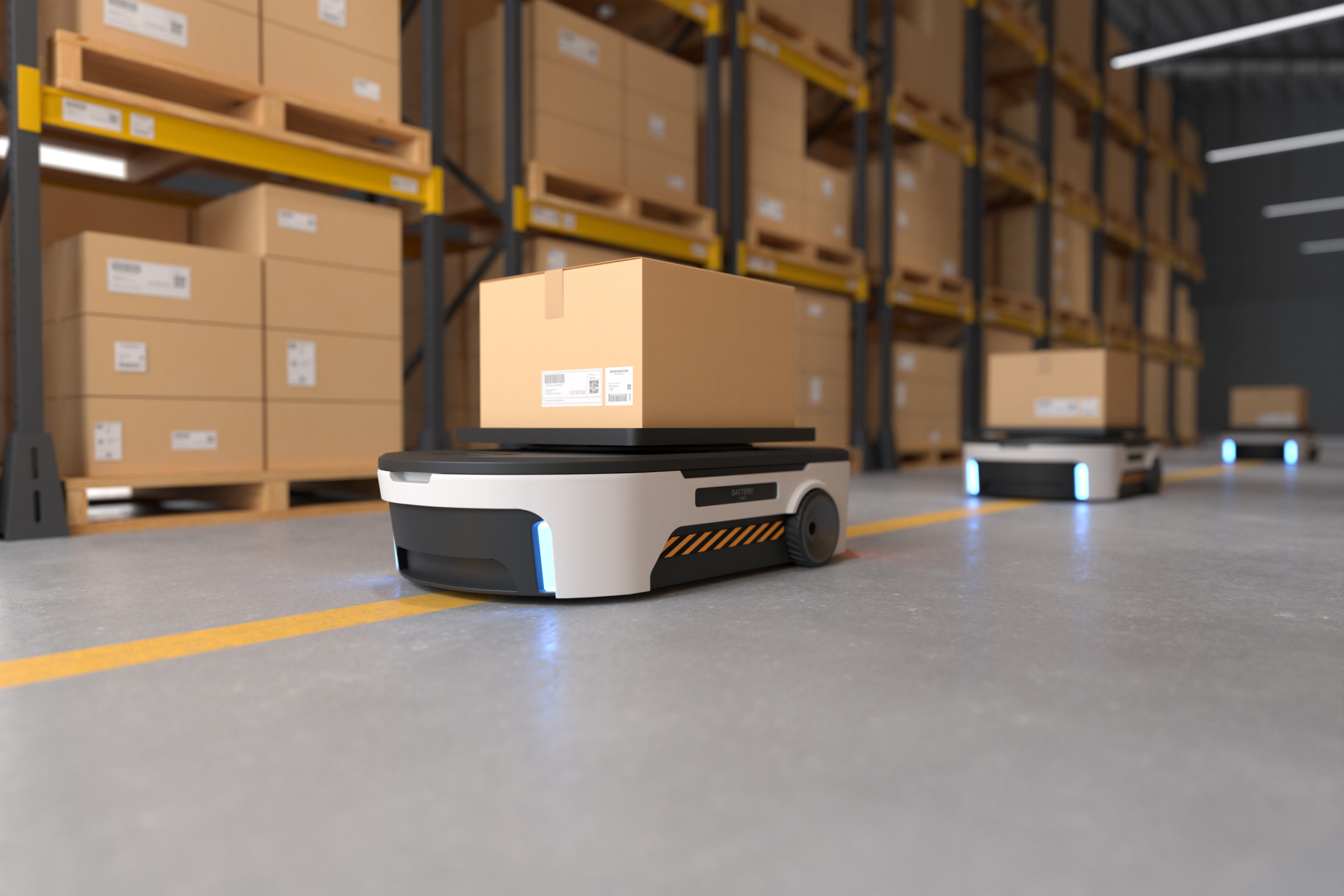In this blog, we’ll look at the components that drive robotic movement, provide an exploration of robotic wheels and casters, coupled with an examination of the features influencing robotic mobility performance. Whether you are a robotics mobility expert or a newcomer to the field, this guide aims to equip you with the knowledge needed for understanding robotic systems mobility.
Rolling Elements Used Across Robotic Applications
- Autonomous Mobile Robots (AMR)
Autonomous Mobile Robots rely on a combination of technologies to navigate and function independently. Rolling elements, particularly drive wheels and stabilizing wheels, are integral components contributing to their seamless mobility and balance.
- Automated Guided Vehicles (AGV)
Automated Guided Vehicles, designed for efficient material handling in industrial settings, utilize rolling elements to facilitate controlled movement, ensuring precision and safety.
- Automated Tug and Towing Equipment
In applications where automated towing is essential, rolling elements such as caster assemblies with spring designs play a vital role in shock absorption, maintaining stability during towing operations.
- Collaborative Robots (COBOTS)
Collaborative Robots, designed to work alongside humans, require specialized rolling elements that prioritize safety and adaptability. Dual/single wheel caster assemblies with a focus on support become crucial in these scenarios.
Types of Rolling Elements
- Dual/Single Wheel Caster Assembly for balancing/support
These caster assemblies are pivotal for maintaining balance and support in robotic platforms, ensuring stability during various movements.
- Dual/Single Wheel Spring Design Caster Assembly for shock absorption
In applications where shock absorption is critical, caster assemblies with spring designs become essential, preventing damage to delicate payloads.
- Traction Wheels
Traction wheels are the driving force behind the movement of robots, providing the necessary grip and power for smooth navigation.
- Stabilizing Wheels
Stabilizing wheels contribute to the overall balance and stability of robotic platforms, preventing unnecessary tilting or swaying.
- Rotational Configurations for Guidance or Cushioning
Rotational configurations are employed to guide or cushion the vehicle, ensuring precise movement and mitigating the impact of uneven terrains.
Critical Features in Design/Application of Robotics Rolling Elements
In the intricate world of design and application, considerations extend beyond mere payload capacity. Designers must factor in maneuverability, balance, and adaptability to diverse environments to create a well-rounded robotic system. The constraints posed by the design envelope of casters necessitate careful deliberation to minimize load height. This, in turn, reduces the overall height of the robotic platform without compromising its performance capabilities.
Selecting the optimal bearing element design is critical for ensuring round-the-clock operation without being burdened by significant Total Preventive Maintenance (TPM) requirements. Equally important is the choice of wearable material for wheel treads, catering to specific application requirements and considering both environmental conditions and the interaction with surfaces to prevent marking or additional wear patterns.
In the realm of robotics, Colson stands as a beacon of support, drawing upon years of experience to provide not only standardized solutions but also tailored, customer-specific innovations. By understanding the intricate needs of different applications and the nuances of rolling element design, Colson empowers the robotics industry to reach new heights of efficiency and performance.
